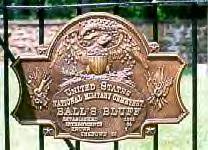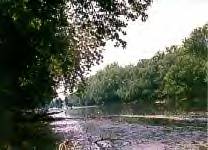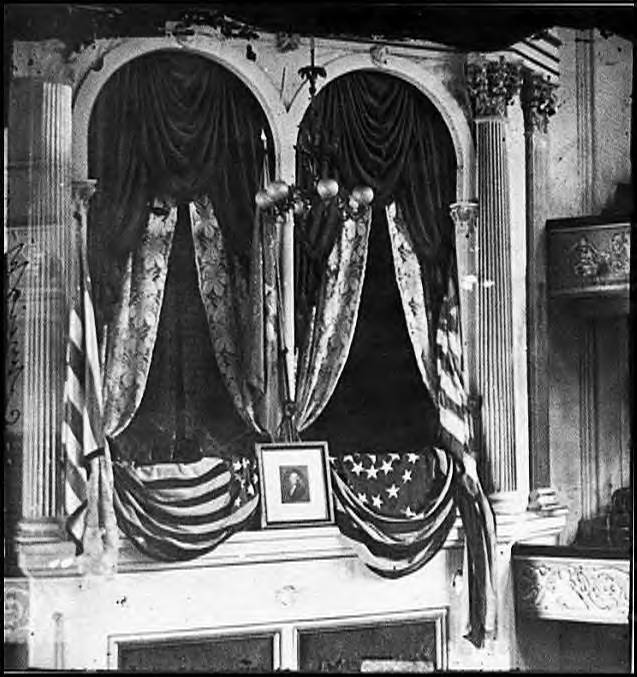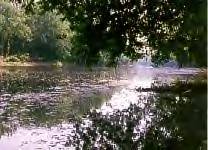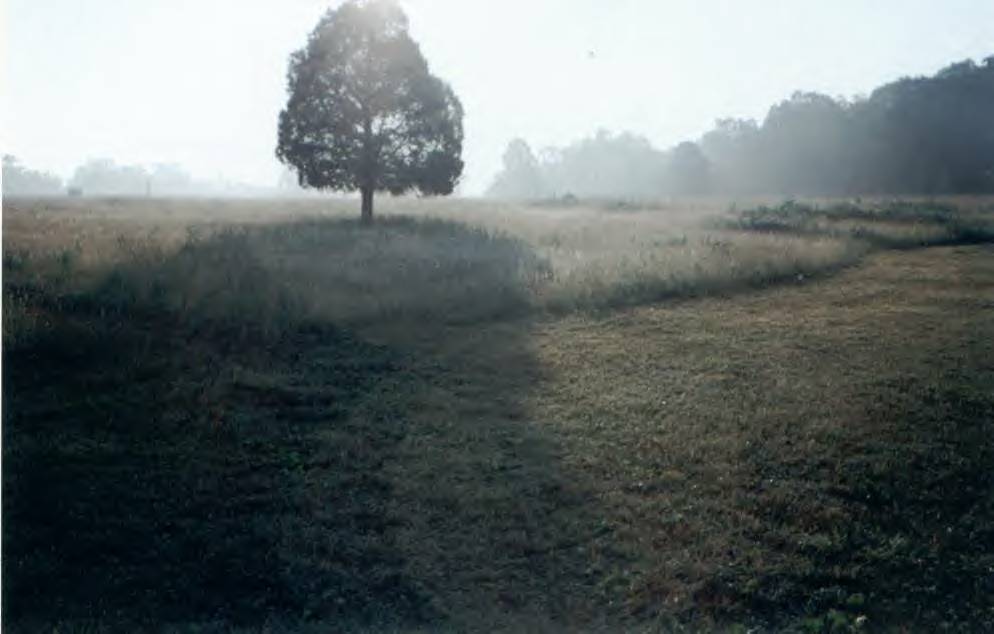|
Hampton Roads Monocacy New Market Seven Days Battles |
On the 15th of October General Banks' division of the Federal army was located at Darnestown, Md., about 15 miles due east from Leesburg, with detachments at Point of Rocks, Sandy Hook, Williamsport, etc.; while the division of Brig.-Gen. C. P. Stone, composed of six companies of cavalry, three of artillery, and the infantry brigades of Gens. W. A. Gorman and F. W. Lander and Col. E. D. Baker, was located at Poolesville, 8 miles north of east from Leesburg. The object in this disposition of so large a force was, not only to guard the right of the big Federal army that General McClellan was gathering at Washington, but especially to cover the important approaches from the northwest to Baltimore and the Federal city, particularly those from the lower Shenandoah valley and northeastern Piedmont, Virginia On October 19th McCall's Federal division advanced to Dranesville, on the road to Leesburg and about 15 miles from that place, "in order to cover the reconnoissance made in all directions the next day;" and later, Smith's Federal division advanced along a parallel road to the west, acting in concert with General McCall. and pushed forward strong parties in the same direction and for the same purpose. About 7 p.m. of the 19th, Stone's advance opened a heavy cannonade on the Confederate positions at Fort Evans, on the Leesburg pike, and at Edwards' Ferry; and at the same time General Evans heard heavy firing in the direction of Dranesville. At midnight General Evans ordered his whole brigade to the front, along the line of Goose creek, 3 miles southeast of Leesburg, where he had a line of intrenchments, to there await an expected attack from General McCall, the next morning, Sunday, October 20th, as it had been reported that the Federal advance was moving in force from Dranesville toward Leesburg. Evans' scouts captured McCall's courier bearing dispatches to General Meade, directing him to examine the roads leading to Leesburg. The Federal batteries kept up a deliberate fire during the day, but no assault was made. On the morning of the 20th the Federal signal officer on Sugar Loaf mountain, in Maryland, reported, "The enemy have moved away from Leesburg." This Banks wired to McClellan, whereupon the latter wired to Stone, at Poolesville, that a heavy reconnoissance would be sent out that day, in all directions, from Dranesville, concluding: "You will keep a good lookout upon Leesburg, to see if this movement has the effect to drive them away. Perhaps a slight demonstration on your part would have the effect to move them." McClellan desired Stone to make demonstrations from his picket line along the Potomac, but did not intend that he should cross the river, in force, for the purpose of fighting. Late in the day Stone reported that he had made a feint of crossing, and at the same time had started a reconnoissance from Harrison's island toward Leesburg, when the enemy's pickets retired to intrenchments. That "slight demonstration" brought on the battle of Ball's Bluff (or, as it is variously called, Leesburg, Harrison s Island, or Conrad's Ferry), on Monday, October 21st. On the morning of the 21st, McCall retired from Evans' front to his camp at Prospect Hill, 4 miles up the river from the Chain bridge. From his point of observation, at the earthwork called "Fort Evans," to the eastward of Leesburg, overlooking the fords at Conrad's and Edwards' ferries and Ball's bluff, Evans, at 6 a.m. on the 2Ist, found that the enemy of Stone's division had effected a crossing at Edwards' ferry and at Ball's bluff, 4 miles above. He promptly sent four companies from his Mississippi regiments and two companies of cavalry, under the command of Lieut.-Col. W. H. Jenifer, to the assistance of Captain Duff, to hold the enemy in check until his plan of attack should be developed. Colonel Jenifer immediately engaged the Federal advance and drove it back toward Ball's bluff. The force that had crossed at Harrison's island, about midnight of the 20th, was part of the command of Colonel Baker, some 300 men under Col. Charles Devens, of the Fifteenth Massachusetts. Its object was to capture a Confederate camp that had been reported to be about a mile from the river. This force advanced to an open field surrounded by woods, where it halted until it could be joined by a company from the Twentieth Massachusetts, which had been left on the bluff, on the Virginia side, to protect the Federal return. Devens, at daybreak, pushed forward with a few men to reconnoiter, and, in person, went to within sight of Leesburg. Thinking he had not been discovered, Devens determined to remain, and sent back to his brigade commander, Colonel Baker, for reinforcements. The latter consulted his division commander, General Stone, and obtained permission to either withdraw Devens or to send over reinforcements to him. He promptly directed Devens to hold his position and said that he would support him, in person, with the rest of his brigade. The boats and fiats that had been provided for crossing the Potomac from the Maryland shore to Harrison's island, and from the latter to the Virginia shore, were entirely inadequate, and it was nearly noon before Devens' regiment of 625 men was closed up on the Virginia shore. Convinced, at about 10 a.m., that the main Federal attack would be at Ball's bluff, 4 miles northeast of Leesburg, Evans ordered Colonel Hunton, with the Eighth Virginia, to the support of Colonel Jenifer, directing him to form line of battle immediately in the rear of Jenifer's command, and that the combined force should then drive the enemy to the river, while he, General Evans, supported the right of the movement with artillery. This movement was made soon after noon, and the opposing forces at once became hotly engaged, the Confederates advancing on the Federals, who held a strong position in front of the woods. Learning, at about this time, that an opposing force was gathering on his left, and that he would soon be vigorously attacked by a body of infantry that appeared in that direction, and by a body of dismounted cavalry that had deployed in his front, and apprehensive of being flanked, Devens retired his regiment to an open space in the woods, in front of the bluff, and prepared to receive an attack. To ascertain about reinforcements, Devens went back to the bluff at about 2 p.m., where he found Colonel Baker, who directed him to form his regiment on the right of the position that he proposed to occupy, while Baker placed 300 of the Twentieth Massachusetts on the left and advanced in front of these his California regiment, with two guns, supported by two companies of the Fifteenth Massachusetts. At about the same hour General Stone ferried a strong force across the river at Edwards' ferry, to make a demonstration on Evans' right, leaving Colonel Baker in command at Ball's bluff. Stone then telegraphed to McClellan: "There has been sharp firing on the right of our line, and our troops appear to be advancing there under Baker. The left, under Gorman, has advanced its skirmishers nearly one mile, and, if the movement continues successful, will turn the enemy's right." At about 2:30 p.m., General Evans, having the advantage of a concealed, shorter and inner line, seeing that the enemy was being constantly reinforced, ordered Colonel Burt, with the Eighteenth Mississippi, to attack the Federal left, while Hunton and Jenifer attacked his front, holding the attack at Edwards' ferry in check by batteries from his intrenchments. As Colonel Burt reached his position, the enemy, concealed in a ravine, opened on him a furious fire, which compelled him to divide his regiment and stop the flank movement that had already begun. At about 3 p.m., Featherston, with the Seventeenth Mississippi, was sent at a double-quick to support Burt's movement. Evans reports: "He arrived in twenty minutes and the action became general along my whole line, and was very hot and brisk for more than two hours, the enemy keeping up a constant fire with his batteries on both sides of the river. At about 6 p.m. I saw that my command had driven the enemy to near the banks of the river. I ordered my entire force to charge and drive him into the river. The charge was immediately made by the whole command, and the forces of the enemy were completely routed, and cried out for quarter along his whole line. In this charge the enemy was driven back at the point of the bayonet, and many were killed and wounded by this formidable weapon. In the precipitate retreat of the enemy on the bluffs of the river, many of his troops rushed into the water and were drowned, while many others, in overloading the boats sunk them and shared the same fate. The rout now, about 7 o'clock, became complete, and the enemy commenced throwing his arms into the river .... At 8 p.m. the enemy surrendered his forces at Ball's bluff, and the prisoners were marched to Leesburg." During this action, Colonel Barksdale, with nine companies of the Thirteenth Mississippi and six pieces of artillery, was held to oppose Stone's movement from Edward's Ferry and also as a reserve. After the engagement, Evans withdrew all his brigade to Leesburg, except Barksdale's regiment, which he left in front of Edwards' ferry. Each of the combatants had about 1,700 men engaged in this action. The Confederates had no artillery in the fight, while the Federals had three light guns. Shortly after the action became general, Colonel Baker, passing in front of his command, was killed by a sharpshooter, which so demoralized the Federals that the surviving officers conferred and decided to retreat. This was opposed by Col. Milton Cogswell, of the Forty-second New York, who had succeeded Colonel Baker in command. He said a retreat down the bluff and across the river was now impossible, and that they must cut their way through the Confederate right to Edwards' ferry. He promptly gave orders to that effect, and moved to the front, followed by the remnants of his own two companies and a portion of the California regiment, but not by the others. He was quickly driven back and the whole Federal command was forced to the river bluff in great disorder. Just then two companies of the Forty-second New York landed on the Virginia shore. These Colonel Cogswell ordered up the bluff and deployed as skirmishers to cover the Federal retreat, while he advanced to the left with a small party, and was almost immediately captured. Colonel Devens escaped by swimming the river.
" I remember when this site started out as a three page Gettysburg site. Man has it grown! Great Job quot;Joe Willis--Scottsdale,AZ "This is a website for the ages!!"Bob Bullerton--Willows,CA. "I just sit here at my computer,chew on some hardtack and enjoy this site."Tico Carfello--Bronx, NY
Copyright © 2001-2005,Gettysburg Battlefield Online
|

